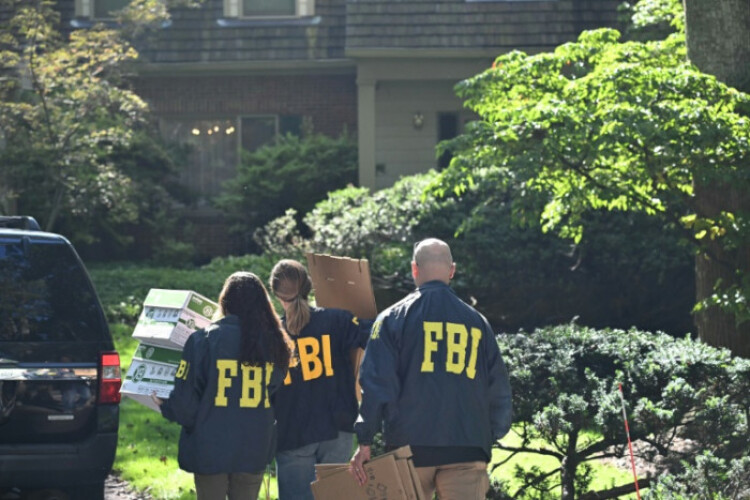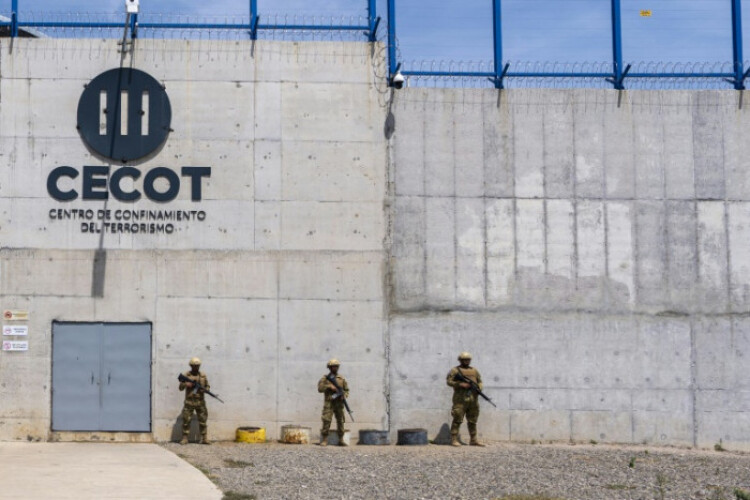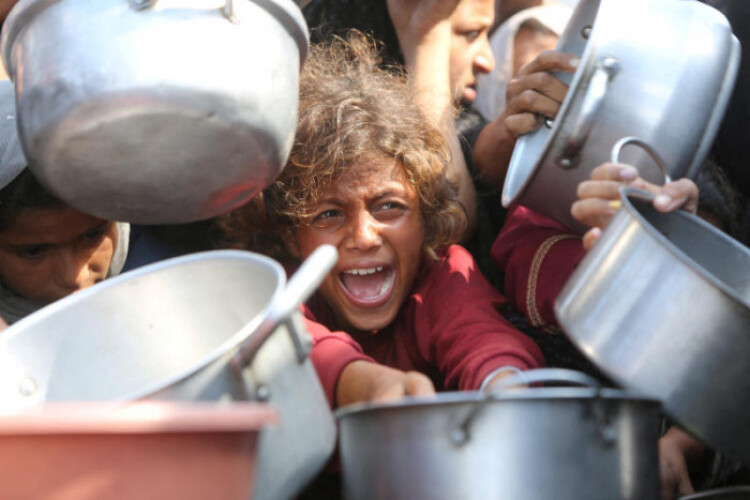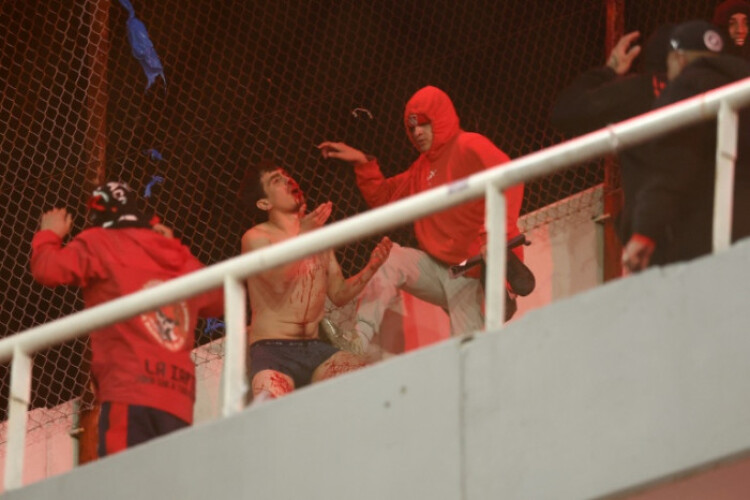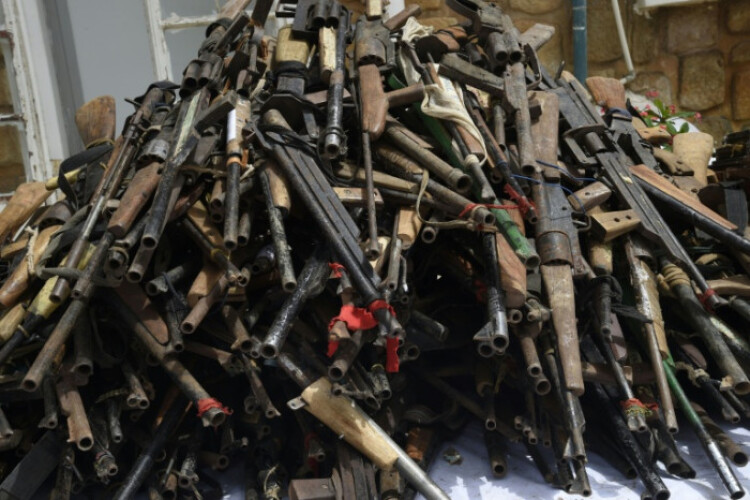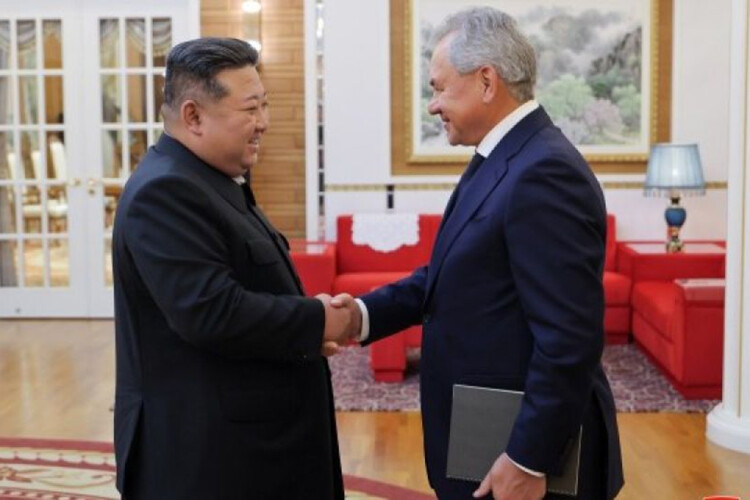
North Korea launched multiple ballistic missiles Wednesday in its latest show of force, just days after an unprecedented public release of photos showing its uranium enrichment facilities capable of producing nuclear weapons material. The missile launches came on the heels of last week’s launches which marked the end of a more than two-month pause in Pyongyang’s missile provocations.
The South Korean military detected North Korea launching several short-range ballistic missiles northeastward in the area of Kaechon, South Pyongan Province, at around 6:50 a.m. local time, according to a statement from the Joint Chiefs of Staff.
The missiles traveled about 400 kilometers, though the JCS noted that South Korea and the United States are still conducting a detailed analysis of their specifications.
South Korea’s presidential office convened a security review meeting Wednesday morning in response to North Korea’s SRBM launches. The meeting, presided by second deputy national security adviser Yin Sung-hwan, brought together key government agencies to discuss countermeasures.
“The government strongly warns North Korea against further provocations and calls for an immediate halt to all provocative actions, including the release of trash-filled balloons,” a presidential official said later in the day on condition of anonymity.
“The government is closely monitoring North Korea’s provocative activities, maintaining a robust military readiness to safeguard the lives and safety of the public, and preparing for a range of possible provocations.”
The latest launches came just six days after North Korea’s previous missile firing on Sept. 12, which marked the first missile activity since July 1.
North Korean state media reported the next day that the test aimed to verify the performance of a new 600mm multiple rocket launcher, referred to by the US as the KN-25, with leader Kim Jong-un overseeing the launches.
The latest launch also came just five days after North Korean state media released unprecedented photos of centrifuges used to produce highly enriched uranium for nuclear weapons. During his visit to the facility, Kim called for expanding the number of centrifuges and accelerating the deployment of a new model, which he claimed is near completion, to strengthen North Korea’s capacity to produce weapons-grade nuclear material.
Experts assessed that North Korea’s recent provocations are driven by a combination of internal and external strategic factors, including an intent to export arms to Russia and a calculated response to the US presidential election on Nov. 5.
North Korea’s renewed show of nuclear and missile capabilities notably coincided with a meeting between Kim and Sergei Shoigu, head of Russia’s Security Council, in Pyongyang on Sept. 13.
Yang Moo-jin, a professor at the University of North Korean Studies in Seoul, suggested that the meeting likely touched on the issue of North Korean arms exports to Russia, especially given the intensifying war in Ukraine.
Yang further explained that the recent flurry of missile launches may have a dual objective: “showcasing North Korea’s weapons systems to Russia while marketing them for potential sales, alongside reassessing its missile capabilities.”
Yang also noted that Pyongyang seeks to “highlight failures in the Biden administration’s North Korea policy by escalating tensions on the Korean Peninsula.” This, Yang explained, is achieved by showcasing its nuclear capabilities and conducting multiple ballistic missile launches as the US presidential election draws near.
At a conference hosted by the Stimson Center in Washington on Tuesday morning, Rachel Minyoung Lee, senior fellow at the Center’s Korea Program and 38 North, emphasized the need for a comprehensive and holistic approach in evaluating the motivations behind North Korea’s recent actions.
“Whenever North Korea does something, and the bigger the action, the more complicated the calculus becomes. It’s never just about the US. You have to look at everything holistically,” Lee said.
Lee emphasized that, beyond the US presidential election and last week’s presidential debate, it is essential to account for other key factors, including North Korea’s internal dynamics and its evolving relationship with Russia.
Lee pointed out that Pyongyang’s public disclosure of Kim’s visit to a uranium enrichment facility occurred on the same day as his meeting with Shoigu. The meeting also marked the first anniversary of Kim’s summit with Russian President Vladimir Putin at the Vostochny Cosmodrome in Russia’s Far East on Sept. 13, 2023.
For domestic motives, Lee assessed that “Kim Jong-un wants to instill pride in the domestic populace, especially in the wake of the devastating floods in some of the provinces in North Korea in early August.”
“Secondly, there’s been a real push domestically inside North Korea to justify why North Korea needs to continue to invest in the defense industry and why that needs to be prioritized over the civilian economy,” Lee added.
In its Wednesday edition, the Rodong Sinmun, the most widely circulated newspaper and organ of the Workers’ Party of Korea, reiterated the legitimacy of strengthening military capabilities in an article titled “Absolute Guarantee of Prosperity — Powerful Strength.”
The article mirrored themes from Kim’s speech commemorating the 76th anniversary of the country’s founding on Sept. 9, in which he urged the nation to “redouble its measures and efforts to make all the armed forces of the state including the nuclear force fully ready for combat.”
“The reality demonstrates that more than economic resources or advantageous geopolitical conditions, a country’s own powerful defense capabilities serve as the foremost foundation and the ultimate safeguard of peace and prosperity,” the Rodong Sinmun’s article read. “If a country’s strength is diminished, its people have no future.”
Asia News Network/The Korea Herald
The South Korean military detected North Korea launching several short-range ballistic missiles northeastward in the area of Kaechon, South Pyongan Province, at around 6:50 a.m. local time, according to a statement from the Joint Chiefs of Staff.
The missiles traveled about 400 kilometers, though the JCS noted that South Korea and the United States are still conducting a detailed analysis of their specifications.
South Korea’s presidential office convened a security review meeting Wednesday morning in response to North Korea’s SRBM launches. The meeting, presided by second deputy national security adviser Yin Sung-hwan, brought together key government agencies to discuss countermeasures.
“The government strongly warns North Korea against further provocations and calls for an immediate halt to all provocative actions, including the release of trash-filled balloons,” a presidential official said later in the day on condition of anonymity.
“The government is closely monitoring North Korea’s provocative activities, maintaining a robust military readiness to safeguard the lives and safety of the public, and preparing for a range of possible provocations.”
The latest launches came just six days after North Korea’s previous missile firing on Sept. 12, which marked the first missile activity since July 1.
North Korean state media reported the next day that the test aimed to verify the performance of a new 600mm multiple rocket launcher, referred to by the US as the KN-25, with leader Kim Jong-un overseeing the launches.
The latest launch also came just five days after North Korean state media released unprecedented photos of centrifuges used to produce highly enriched uranium for nuclear weapons. During his visit to the facility, Kim called for expanding the number of centrifuges and accelerating the deployment of a new model, which he claimed is near completion, to strengthen North Korea’s capacity to produce weapons-grade nuclear material.
Experts assessed that North Korea’s recent provocations are driven by a combination of internal and external strategic factors, including an intent to export arms to Russia and a calculated response to the US presidential election on Nov. 5.
North Korea’s renewed show of nuclear and missile capabilities notably coincided with a meeting between Kim and Sergei Shoigu, head of Russia’s Security Council, in Pyongyang on Sept. 13.
Yang Moo-jin, a professor at the University of North Korean Studies in Seoul, suggested that the meeting likely touched on the issue of North Korean arms exports to Russia, especially given the intensifying war in Ukraine.
Yang further explained that the recent flurry of missile launches may have a dual objective: “showcasing North Korea’s weapons systems to Russia while marketing them for potential sales, alongside reassessing its missile capabilities.”
Yang also noted that Pyongyang seeks to “highlight failures in the Biden administration’s North Korea policy by escalating tensions on the Korean Peninsula.” This, Yang explained, is achieved by showcasing its nuclear capabilities and conducting multiple ballistic missile launches as the US presidential election draws near.
At a conference hosted by the Stimson Center in Washington on Tuesday morning, Rachel Minyoung Lee, senior fellow at the Center’s Korea Program and 38 North, emphasized the need for a comprehensive and holistic approach in evaluating the motivations behind North Korea’s recent actions.
“Whenever North Korea does something, and the bigger the action, the more complicated the calculus becomes. It’s never just about the US. You have to look at everything holistically,” Lee said.
Lee emphasized that, beyond the US presidential election and last week’s presidential debate, it is essential to account for other key factors, including North Korea’s internal dynamics and its evolving relationship with Russia.
Lee pointed out that Pyongyang’s public disclosure of Kim’s visit to a uranium enrichment facility occurred on the same day as his meeting with Shoigu. The meeting also marked the first anniversary of Kim’s summit with Russian President Vladimir Putin at the Vostochny Cosmodrome in Russia’s Far East on Sept. 13, 2023.
For domestic motives, Lee assessed that “Kim Jong-un wants to instill pride in the domestic populace, especially in the wake of the devastating floods in some of the provinces in North Korea in early August.”
“Secondly, there’s been a real push domestically inside North Korea to justify why North Korea needs to continue to invest in the defense industry and why that needs to be prioritized over the civilian economy,” Lee added.
In its Wednesday edition, the Rodong Sinmun, the most widely circulated newspaper and organ of the Workers’ Party of Korea, reiterated the legitimacy of strengthening military capabilities in an article titled “Absolute Guarantee of Prosperity — Powerful Strength.”
The article mirrored themes from Kim’s speech commemorating the 76th anniversary of the country’s founding on Sept. 9, in which he urged the nation to “redouble its measures and efforts to make all the armed forces of the state including the nuclear force fully ready for combat.”
“The reality demonstrates that more than economic resources or advantageous geopolitical conditions, a country’s own powerful defense capabilities serve as the foremost foundation and the ultimate safeguard of peace and prosperity,” the Rodong Sinmun’s article read. “If a country’s strength is diminished, its people have no future.”
Asia News Network/The Korea Herald

